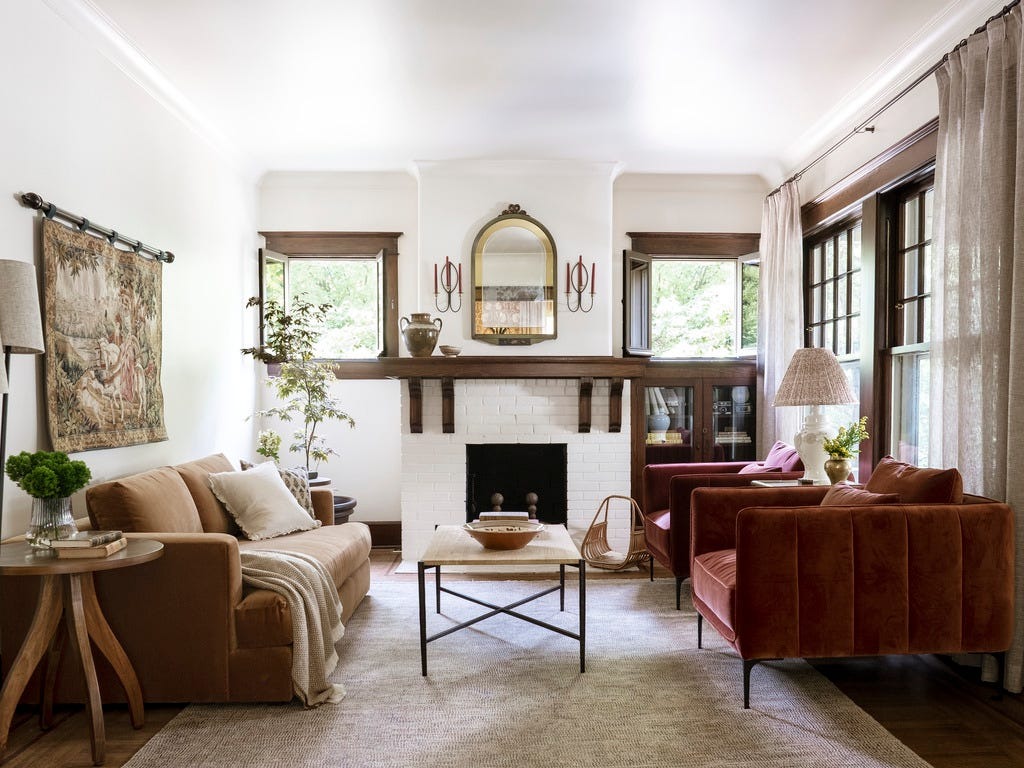
Living in a small space doesn't mean you have to sacrifice style or functionality. With the right furniture layout, even the tiniest rooms can feel spacious, comfortable, and incredibly stylish. Whether you’re working with a compact apartment, a tiny living room, or a snug studio, the trick lies in using every square inch wisely.
The key? Smart furniture placement. In this guide, we'll walk you through clever and creative layout ideas that help you maximize your small space while still making it feel open and inviting.
1. Use Multi-Functional Furniture
When space is limited, every piece of furniture should do double duty.
Great Options:
- Ottomans with hidden storage
- Sofa beds or futons
- Extendable dining tables
- Benches that can double as coffee tables
Why It Works:
These pieces save space while adding flexibility and storage—two things every small home needs.
2. Float Your Furniture
Don’t push everything against the walls. It may seem like it opens up space, but it can actually make the room feel cramped.
Try This:
- Pull the sofa a few inches off the wall
- Angle chairs around a central point like a rug or coffee table
Why It Works:
Floating furniture gives a more intentional look and improves flow, making the room feel airier.
3. Create Zones
Small spaces can still have defined areas for different activities.
Zone Ideas:
- Use a rug to define the living area
- Place a narrow console or bookshelf as a room divider
- Use lighting to distinguish between areas (like a reading lamp in a cozy corner)
Why It Works:
Zoning adds structure and helps your space serve multiple purposes without feeling cluttered.
4. Go Vertical with Storage
When you can’t spread out, go up.
Smart Solutions:
- Tall bookshelves
- Wall-mounted shelves and cabinets
- Hanging storage for kitchens and bathrooms
Why It Works:
Vertical storage frees up floor space and draws the eye upward, making rooms feel larger.
5. Use Light and Reflective Materials
Color and material choices can make a big difference in how spacious a room feels.
Tips:
- Choose light-colored furniture and walls
- Add mirrors to reflect light and create the illusion of depth
- Opt for glass or acrylic tables to keep the look open
Why It Works:
Light and reflections bounce around the room, making it feel brighter and more expansive.
6. Pick the Right Size Furniture
Don’t cram oversized furniture into a small room.
What to Look For:
- Slim-profile sofas and chairs
- Nesting tables instead of a large coffee table
- Armless seating to open up views
Why It Works:
Properly scaled furniture ensures comfort without crowding the space.
7. Try a Corner Sofa
L-shaped or sectional sofas can work well even in small rooms—if placed correctly.
Layout Tip:
- Tuck the corner of the sofa into a corner of the room
- Use a round coffee table to soften angles and save space
Why It Works:
A corner sofa maximizes seating without breaking up the room’s flow.
8. Don’t Forget the Entryway
Even in small spaces, having a designated drop zone can help with organization.
Space-Saving Ideas:
- Use a slim console table
- Hang hooks or floating shelves for bags and keys
- Add a small bench with storage underneath
Why It Works:
An organized entryway prevents clutter from spreading into your living space.
9. Use Furniture as Room Dividers
If you’re in a studio apartment or an open-concept home, furniture can help define each area.
Ideas:
- Use a bookcase or open shelving unit between the living and sleeping area
- A sofa with its back to the dining area can visually divide the space
Why It Works:
This adds structure and makes the space feel more organized without needing permanent walls.
10. Keep Walkways Clear
Make sure there’s enough room to move around furniture easily.
Tips:
- Leave at least 24–30 inches of walking space between pieces
- Don’t block windows or doorways with large furniture
Why It Works:
Good flow prevents the room from feeling cramped or cluttered, no matter its size.
Conclusion
When it comes to small spaces, it’s not about having less—it’s about making more out of what you have. With thoughtful furniture placement, multifunctional pieces, and clever zoning, even the coziest homes can feel open and functional.
So don’t let square footage limit your creativity. Whether you’re furnishing a tiny apartment, a compact studio, or just trying to make your home feel bigger, the right layout can transform your space completely. Try out a few of these ideas and watch your small room start to feel surprisingly spacious!